#community unionism
Explore tagged Tumblr posts
Text

J.5.1 What is community unionism?
Community unionism is our term for the process of creating participatory communities (called “communes” in classical anarchism) within the current society in order to transform it.
Basically, a community union is the creation of interested members of a community who decide to form an organisation to fight against injustice and improvements locally. It is a forum by which inhabitants can raise issues that affect themselves and others and provide a means of solving these problems. As such, it is a means of directly involving local people in the life of their own communities and collectively solving the problems facing them as both individuals and as part of a wider society. In this way, local people take part in deciding what effects them and their community and create a self-managed “dual power” to the local and national state. They also, by taking part in self-managed community assemblies, develop their ability to participate and manage their own affairs, so showing that the state is unnecessary and harmful to their interests. Politics, therefore, is not separated into a specialised activity that only certain people do (i.e. politicians). Instead, it becomes communalised and part of everyday life and in the hands of all.
As would be imagined, like the participatory communities that would exist in an anarchist society (see section I.5), the community union would be based upon a mass assembly of its members. Here would be discussed the issues that effect the membership and how to solve them. Thus issues like rent increases, school closures, rising cost of living, taxation, cuts and state-imposed “reforms” to the nature and quality of public services, utilities and resources, repressive laws and so on could be debated and action taken to combat them. Like the communes of a future anarchy, these community unions would be confederated with other unions in different areas in order to co-ordinate joint activity and solve common problems. These confederations would be based upon self-management, mandated and recallable delegates and the creation of administrative action committees to see that the memberships decisions are carried out.
The community union could also raise funds for strikes and other social protests, organise pickets, boycotts and generally aid others in struggle. By organising their own forms of direct action (such as tax and rent strikes, environmental protests and so on) they can weaken the state while building an self-managed infrastructure of co-operatives to replace the useful functions the state or capitalist firms currently provide. So, in addition to organising resistance to the state and capitalist firms, these community unions could play an important role in creating an alternative economy within capitalism. For example, such unions could have a mutual bank or credit union associated with them which could allow funds to be gathered for the creation of self-managed co-operatives and social services and centres. In this way a communalised co-operative sector could develop, along with a communal confederation of community unions and their co-operative banks.
Such community unions have been formed in many different countries in recent years to fight against numerous attacks on the working class. In the late 1980s and early 1990s groups were created in neighbourhoods across Britain to organise non-payment of the Conservative government’s Community Charge (popularly known as the poll tax, this tax was independent on income and was based on the electoral register). Federations of these groups were created to co-ordinate the struggle and pull resources and, in the end, ensured that the government withdrew the hated tax and helped push Thatcher out of government. In Ireland, similar groups were formed to defeat the privatisation of the water industry by a similar non-payment campaign in the mid-1990s.
However, few of these groups have been taken as part of a wider strategy to empower the local community but the few that have indicate the potential of such a strategy. This potential can be seen from two examples of libertarian community organising in Europe, one in Italy and another in Spain, while the neighbourhood assemblies in Argentina show that such popular self-government can and does develop spontaneously in struggle.
In Southern Italy, anarchists organised a very successful Municipal Federation of the Base (FMB) in Spezzano Albanese. This organisation, in the words of one activist, is “an alternative to the power of the town hall” and provides a “glimpse of what a future libertarian society could be.” Its aim is “the bringing together of all interests within the district. In intervening at a municipal level, we become involved not only in the world of work but also the life of the community … the FMB make counter proposals [to Town Hall decisions], which aren’t presented to the Council but proposed for discussion in the area to raise people’s level of consciousness. Whether they like it or not the Town Hall is obliged to take account of these proposals.” In addition, the FMB also supports co-operatives within it, so creating a communalised, self-managed economic sector within capitalism. Such a development helps to reduce the problems facing isolated co-operatives in a capitalist economy — see section J.5.11 — and was actively done in order to “seek to bring together all the currents, all the problems and contradictions, to seek solutions” to such problems facing co-operatives. [“Community Organising in Southern Italy”, pp. 16–19, Black Flag, no. 210, p. 17 and p. 18]
Elsewhere in Europe, the long, hard work of the C.N.T. in Spain has also resulted in mass village assemblies being created in the Puerto Real area, near Cadiz. These community assemblies came about to support an industrial struggle by shipyard workers. One C.N.T. member explains: “Every Thursday of every week, in the towns and villages in the area, we had all-village assemblies where anyone connected with the particular issue [of the rationalisation of the shipyards], whether they were actually workers in the shipyard itself, or women or children or grandparents, could go along … and actually vote and take part in the decision making process of what was going to take place.” With such popular input and support, the shipyard workers won their struggle. However, the assembly continued after the strike and “managed to link together twelve different organisations within the local area that are all interested in fighting … various aspects” of capitalism including health, taxation, economic, ecological and cultural issues. Moreover, the struggle “created a structure which was very different from the kind of structure of political parties, where the decisions are made at the top and they filter down. What we managed to do in Puerto Real was make decisions at the base and take them upwards.” [Anarcho-Syndicalism in Puerto Real: from shipyard resistance to direct democracy and community control, p. 6]
More recently, the December 2001 revolt against neo-liberalism in Argentina saw hundreds of neighbourhood assemblies created across the country. These quickly federated into inter-barrial assemblies to co-ordinate struggles. The assemblies occupied buildings, created communal projects like popular kitchens, community centres, day-care centres and built links with occupied workplaces. As one participant put it: “The initial vocabulary was simply: Let’s do things for ourselves, and do them right. Let’s decide for ourselves. Let’s decide democratically, and if we do, then let’s explicitly agree that we’re all equals here, that there are no bosses … We lead ourselves. We lead together. We lead and decide amongst ourselves … no one invented it … It just happened. We met one another on the corner and decided, enough! … Let’s invent new organisational forms and reinvent society.” Another notes that this was people who “begin to solve problems themselves, without turning to the institutions that caused the problems in the first place.” The neighbourhood assemblies ended a system in which “we elected people to make our decisions for us … now we will make our own decisions.” While the “anarchist movement has been talking about these ideas for years” the movement took them up “from necessity.” [Marina Sitrin (ed.), Horizontalism: Voices of Popular Power in Argentina, p. 41 and pp. 38–9]
The idea of community organising has long existed within anarchism. Kropotkin pointed to the directly democratic assemblies of Paris during the French Revolution> These were “constituted as so many mediums of popular administration, it remained of the people, and this is what made the revolutionary power of these organisations.” This ensured that the local revolutionary councils “which sprang from the popular movement was not separated from the people.” In this popular self-organisation “the masses, accustoming themselves to act without receiving orders from the national representatives, were practising what was described later on as Direct Self-Government.” These assemblies federated to co-ordinate joint activity but it was based on their permanence: “that is, the possibility of calling the general assembly whenever it was wanted by the members of the section and of discussing everything in the general assembly.” In short, “the Commune of Paris was not to be a governed State, but a people governing itself directly — when possible — without intermediaries, without masters” and so “the principles of anarchism … had their origin, not in theoretic speculations, but in the deeds of the Great French Revolution.” This “laid the foundations of a new, free, social organisation”and Kropotkin predicted that “the libertarians would no doubt do the same to-day.” [Great French Revolution, vol. 1, p. 201, p. 203, pp. 210–1, p. 210, p. 204 and p. 206]
In Chile during 1925 “a grass roots movement of great significance emerged,” the tenant leagues (ligas do arrendatarios). The movement pledged to pay half their rent beginning the 1st of February, 1925, at huge public rallies (it should also be noted that “Anarchist labour unionists had formed previous ligas do arrendatarios in 1907 and 1914.”). The tenants leagues were organised by ward and federated into a city-wide council. It was a vast organisation, with 12,000 tenants in just one ward of Santiago alone. The movement also “press[ed] for a law which would legally recognise the lower rents they had begun paying .. . the leagues voted to declare a general strike … should a rent law not be passed.” The government gave in, although the landlords tried to get around it and, in response, on April 8th “the anarchists in Santiago led a general strike in support of the universal rent reduction of 50 percent.” Official figures showed that rents “fell sharply during 1915, due in part to the rent strikes” and for the anarchists “the tenant league movement had been the first step toward a new social order in Chile.” [Peter DeShazo, Urban Workers and Labor Unions in Chile 1902–1927, p. 223, p. 327, p. 223, p. 225 and p. 226] As one Anarchist newspaper put it:
“This movement since its first moments had been essentially revolutionary. The tactics of direct action were preached by libertarians with highly successful results, because they managed to instil in the working classes the idea that if landlords would not accept the 50 percent lowering of rents, they should pay nothing at all. In libertarian terms, this is the same as taking possession of common property. It completes the first stage of what will become a social revolution.” [quoted by DeShazo, Op. Cit., p. 226]
A similar concern for community organising and struggle was expressed in Spain. While the collectives during the revolution are well known, the CNT had long organised in the community and around non-workplace issues. As well as neighbourhood based defence committees to organise and co-ordinate struggles and insurrections, the CNT organised various community based struggles. The most famous example of this must be the rent strikes during the early 1930s in Barcelona. In 1931, the CNT’s Construction Union organised a “Economic Defence Commission” to organise against high rents and lack of affordable housing. Its basic demand was for a 40% rent decrease but it also addressed unemployment and the cost of food. The campaign was launched by a mass meeting on May 1st, 1931. A series of meetings were held in the various working class neighbourhoods of Barcelona and in surrounding suburbs. This culminated in a mass meeting held at the Palace of Fine Arts on July 5th which raised a series of demands for the movement. By July, 45,000 people were taking part in the rent strike and this rose to over 100,000 by August. As well as refusing to pay rent, families were placed back into their homes from which they had been evicted. The movement spread to a number of the outlying towns which set up their own Economic Defence Commissions. The local groups co-ordinated actions their actions out of CNT union halls or local libertarian community centres. The movement faced increased state repression but in many parts of Barcelona landlords had been forced to come to terms with their tenants, agreeing to reduced rents rather than facing the prospect of having no income for an extended period or the landlord simply agreed to forget the unpaid rents from the period of the rent strike. [Nick Rider, “The Practice of Direct Action: the Barcelona rent strike of 1931”, For Anarchism, David Goodway (ed.), pp. 79–105] As Abel Paz summarised:
“Unemployed workers did not receive or ask for state aid … The workers’ first response to the economic crisis was the rent, gas, and electricity strike in mid-1933, which the CNT and FAI’s Economic Defence Committee had been laying the foundations for since 1931. Likewise, house, street, and neighbourhood groups began to turn out en masse to stop evictions and other coercive acts ordered by the landlords (always with police support). The people were constantly mobilised. Women and youngsters were particularly active; it was they who challenged the police and stopped the endless evictions.” [Durrutu in the Spanish Revolution, p. 308]
In Gijon, the CNT “reinforced its populist image by … its direct consumer campaigns. Some of these were organised through the federation’s Anti-Unemployment Committee, which sponsored numerous rallies and marches in favour of ‘bread and work.’ While they focused on the issue of jobs, they also addressed more general concerns about the cost of living for poor families. In a May 1933 rally, for example, demonstrators asked that families of unemployed workers not be evicted from their homes, even if they fell behind on the rent.” The “organisers made the connections between home and work and tried to draw the entire family into the struggle.” However, the CNT’s “most concerted attempt to bring in the larger community was the formation of a new syndicate, in the spring of 1932, for the Defence of Public Interests (SDIP). In contrast to a conventional union, which comprised groups of workers, the SDIP was organised through neighbourhood committees. Its specific purpose was to enforce a generous renters’ rights law of December 1931 that had not been vigorously implemented. Following anarchosyndicalist strategy, the SDIP utilised various forms of direct action, from rent strikes, to mass demonstrations, to the reversal of evictions.” This last action involved the local SDIP group going to a home, breaking the judge’s official eviction seal and carrying the furniture back in from the street. They left their own sign: ”opened by order of the CNT.” The CNT’s direct action strategies “helped keep political discourse in the street, and encouraged people to pursue the same extra-legal channels of activism that they had developed under the monarchy.” [Pamela Beth Radcliff, From mobilization to civil war, pp. 287–288 and p. 289]
In these ways, grassroots movements from below were created, with direct democracy and participation becoming an inherent part of a local political culture of resistance, with people deciding things for themselves directly and without hierarchy. Such developments are the embryonic structures of a world based around participation and self-management, with a strong and dynamic community life. For, as Martin Buber argued, ”[t]he more a human group lets itself be represented in the management of its common affairs … the less communal life there is in it and the more impoverished it becomes as a community.” [Paths in Utopia, p. 133]
Anarchist support and encouragement of community unionism, by creating the means for communal self-management, helps to enrich the community as well as creating the organisational forms required to resist the state and capitalism. In this way we build the anti-state which will (hopefully) replace the state. Moreover, the combination of community unionism with workplace assemblies (as in Puerto Real), provides a mutual support network which can be very effective in helping winning struggles. For example, in Glasgow, Scotland in 1916, a massive rent strike was finally won when workers came out in strike in support of the rent strikers who been arrested for non-payment. Such developments indicate that Isaac Puente was correct:
“Libertarian Communism is a society organised without the state and without private ownership. And there is no need to invent anything or conjure up some new organisation for the purpose. The centres about which life in the future will be organised are already with us in the society of today: the free union and the free municipality [or Commune]. ”The union: in it combine spontaneously the workers from factories and all places of collective exploitation. “And the free municipality: an assembly … where, again in spontaneity, inhabitants … combine together, and which points the way to the solution of problems in social life … “Both kinds of organisation, run on federal and democratic principles, will be sovereign in their decision making, without being beholden to any higher body, their only obligation being to federate one with another as dictated by the economic requirement for liaison and communications bodies organised in industrial federations. “The union and the free municipality will assume the collective or common ownership of everything which is under private ownership at present [but collectively used] and will regulate production and consumption (in a word, the economy) in each locality.
“The very bringing together of the two terms (communism and libertarian) is indicative in itself of the fusion of two ideas: one of them is collectivist, tending to bring about harmony in the whole through the contributions and co-operation of individuals, without undermining their independence in any way; while the other is individualist, seeking to reassure the individual that his independence will be respected.” [Libertarian Communism, pp. 6–7]
The combination of community unionism, along with industrial unionism (see next section), will be the key to creating an anarchist society, Community unionism, by creating the free commune within the state, allows us to become accustomed to managing our own affairs and seeing that an injury to one is an injury to all. In this way a social power is created in opposition to the state. The town council may still be in the hands of politicians, but neither they nor the central government would be able to move without worrying about what the people’s reaction might be, as expressed and organised in their community assemblies and federations.
#community unionism#community building#practical anarchy#practical anarchism#anarchist society#practical#faq#anarchy faq#revolution#anarchism#daily posts#communism#anti capitalist#anti capitalism#late stage capitalism#organization#grassroots#grass roots#anarchists#libraries#leftism#social issues#economy#economics#climate change#climate crisis#climate#ecology#anarchy works#environmentalism
7 notes
·
View notes
Text
Activism is not cold-calling.
Activism is not cold-calling, and this is critically important to understand.
I'm seeing a lot of posts on here about 'building bridges' and 'finding community,' and then (extremely valid) response posts saying "BUT HOW??" And I'm going to explain something that can be very counter-intuitive: there is strategy involved in community.
As a longtime volunteer labour organizer, I’ve taken and taught many trainings on the strategy of talking. Something that surprises a lot of people is the very first thing you do in a union campaign. You sit down with your organizing committee, take out pen and paper, and literally map it out. You draw a physical map of the workplace: where are the entrances, exits, break rooms, supervisor offices. Essentially, ‘where is it safe to have a union conversation.’ Then you draw another physical chart of your coworkers. You sort out who is union-friendly, openly hostile to unions, or somewhere in the middle, and then you plan out very deliberately and carefully who talks to whom and in what order.
Consider: If Vocally Leftist Jane walks up to Conservative David and says "hey what do you think about unions," David is going to shut down immediately. He's not inclined to listen to Jane. But if Jane talks to Moderate Jason and brings him into the fold, then Jason is a far more effective strategic choice to talk to David, and David may actually hear him out without an instant reaction.
IMPORTANT CAVEAT: If Conservative David turns out to be Alt-Right David, and could be dangerous to follow organizers, we write him off. We are not trying to reach Alt-Right David. We are trying to reach Conservative David, who may actually be persuaded to find solidarity with other employees as fellow workers. Jason is a safe scout to find out which one he is. It does no one any good if Leftist Jane (or even Moderate Jane who is a visible minority) talks to Alt-Right David and puts herself on his radar. Not only has she done nothing to convince Alt-Right David to join a union - she's probably actively turned him against the idea - but now she's also in danger and the entire campaign is at risk. NOBODY WANTS THIS. Jane was NOT a hero for doing this. The organizing committee was foolish and enacted a terrible strategy to everyone's detriment.
Where you can make a difference is with people who will listen to you. You having a conversation with your well-meaning but clueless Centrist Democrat Auntie, and maybe gently helping her understand some things the media has been glossing over, is way more strategically useful than you marching up to MAGA Neighbour You've Met Once and trying to "build community" or "understand" them. They don't care. They're impervious, dangerous, and cruel. But maybe your beloved auntie will think about what you said, and then talk to her friend Anna who IDs as "fiscally conservative" but didn't vote because she can't bring herself to get on board with Trump. Then perhaps Anna talks to her brother Nic who has MAGA leanings but isn't all the way there yet. Proto-MAGA Nic would not have listened to you, nor would he have listened to Centrist Democrat Auntie, but he might absorb some of what his sister is saying.
This is not a cop-out or an echo chamber. This is you spending your time and energy strategically and safely. You are not a useful activist to anyone if you’re dead. Anyone who is telling you to hurl yourself directly at MAGA assholes like cannon fodder has no understanding of the strategy behind community building, and you should feel comfortable writing them off.
Last point: If you are tired, emotionally devastated, and/or in danger: take a break. This post is for people who would feel better jumping into action, not for people who are too overwhelmed to even think about it right now. You are worth so much even if you’re not actively Doing Activism, and your rest is worth more than “a break period so you can recharge and Do More Activism.” We all deserve the individual dignity of being worthy of comfort, rest & safety just on the basis of being human, outside of whatever we're doing for others' benefit. To deny ourselves that dignity is to devalue ourselves, and that’s the absolute last thing any of us should be doing right now.
14K notes
·
View notes
Text
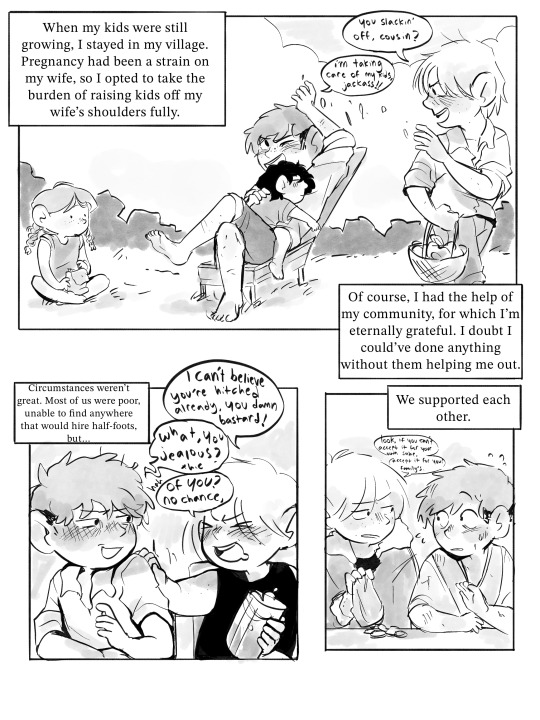
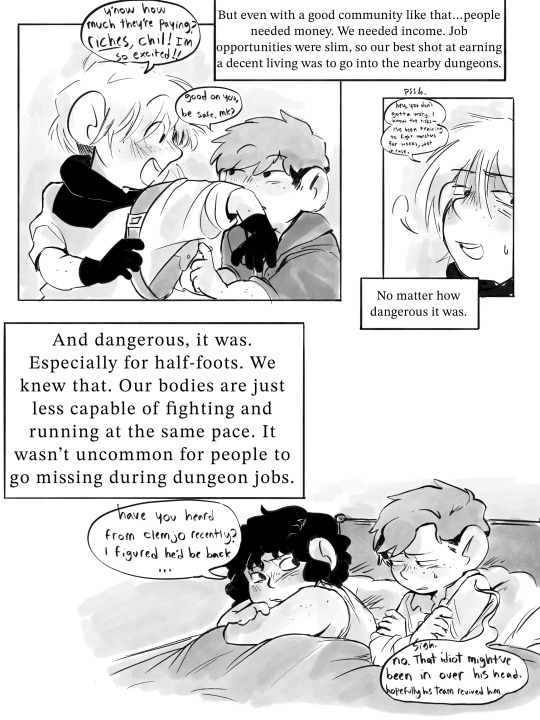
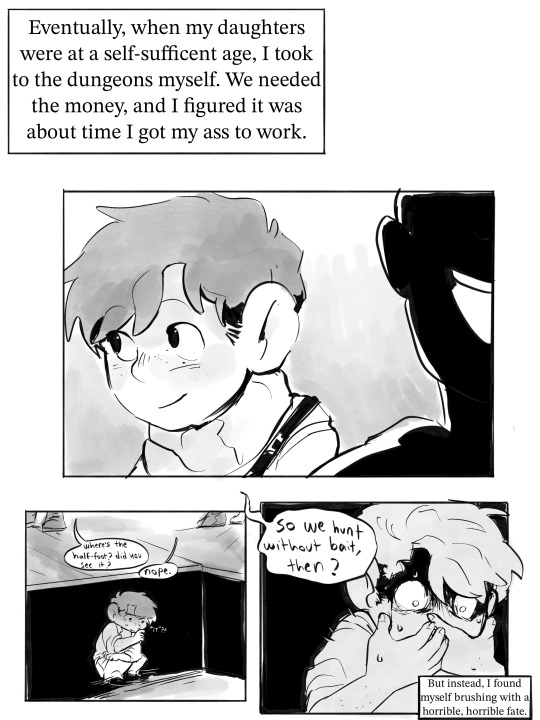
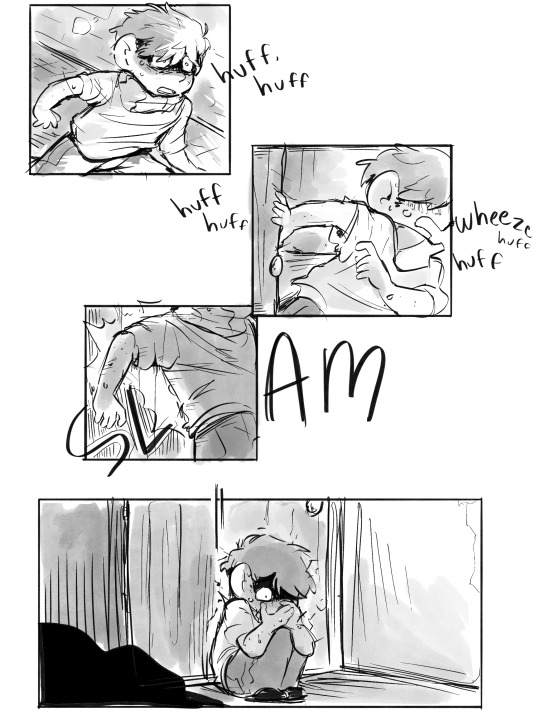
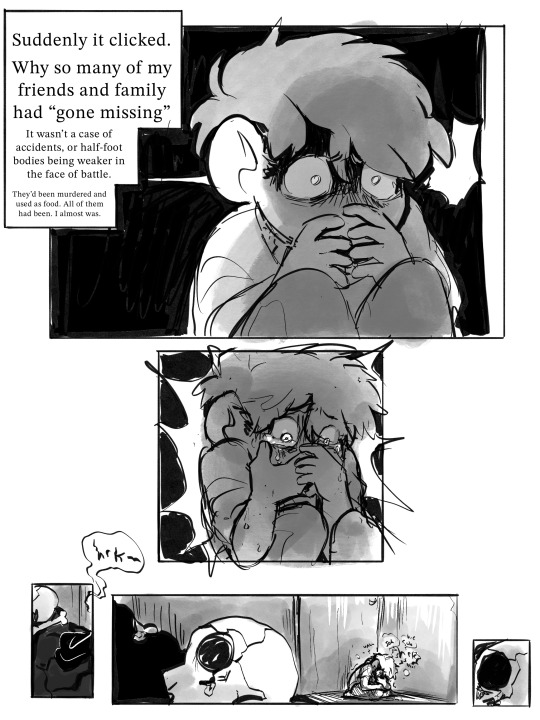
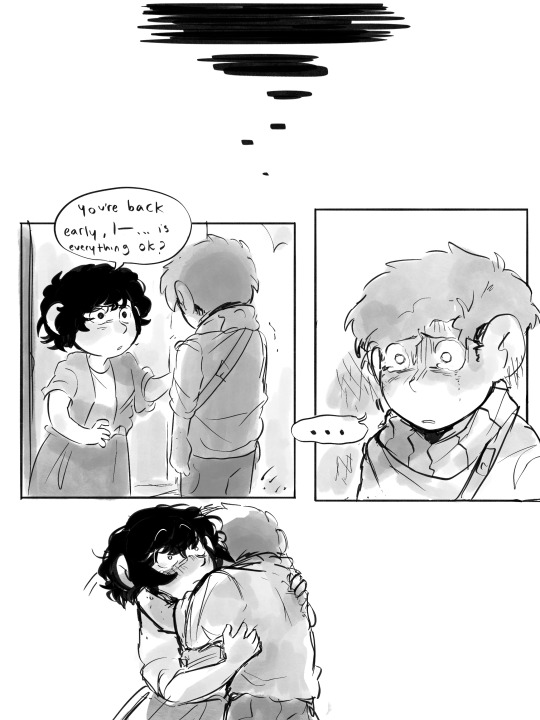
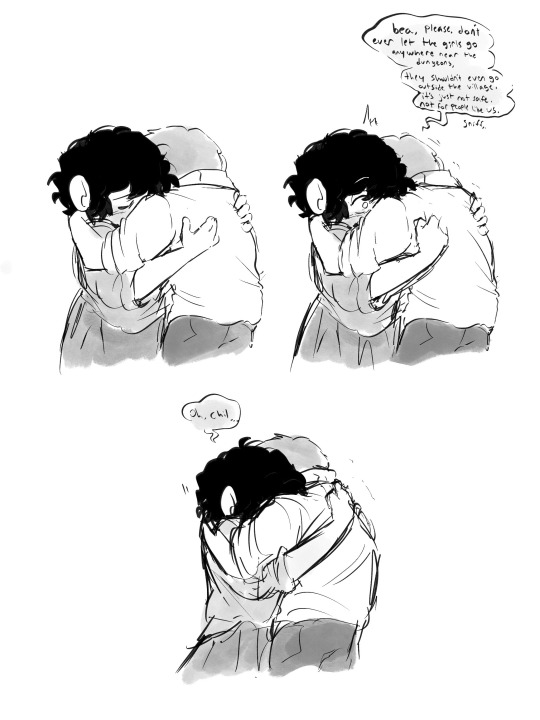
contracts written in blood
+
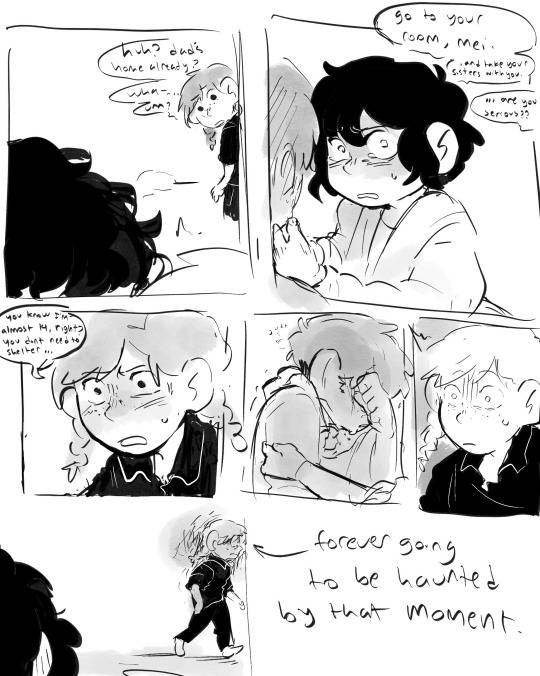
#dungeon meshi#aj art#chilchuck#comic#I was thinking about it#chilchuck was not the first person to the experience of almost being used as bait#it was apparently a very common practice#and so I’m like. He definitely has known people in his community who ended up meeting this fate#who didn’t get out on time the way he did#i dont think he formed the whole union over just his own experience#Anyways shoutout to meijack#Experiencing the trauma that is seeing your father cry#beabell#Chilchuck backstory stuff#Clemjo
22K notes
·
View notes
Text

#class war#class warfare#classism#capitalism#real estate#affordable housing#communism#the soviet union#ussr
11K notes
·
View notes
Text
October 2, 2024 - Over 1,000 Samsung workers in Chennai, India, have been on strike for four weeks, making it India’s biggest strike in recent years. The protests have disrupted production at the factory, which employs 1800 people and contributed a fifth of Samsung’s $12 billion revenue in India last year.
The striking workers are demanding recognition of their union, CITU, and a wage increase. The average salary for the Samsung workers is currently about $300 a month. [video]
#india#chennai#citu#union#unions#factory workers#workers#industrial action#strike#communism#hammer and sickle#working class#workers struggle#samsung#2024#video#flag#labor#tech
4K notes
·
View notes
Text
if i see a single one of you pissed that your faves canceled an event or a con appearance because they're striking for fair wages then imma come for you in your sleep 🔪🔪🔪
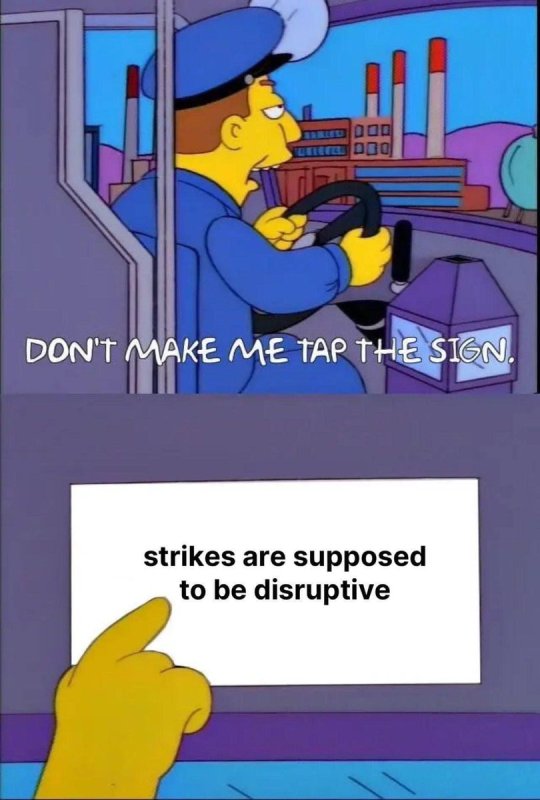
(direct that fury where it belongs: AMPTP and the execs)
#sag aftra#sagaftra#sag aftra strong#sag aftra strike#union strong#wga strike#PAY THE FUCKING ACTORS AND WRITERS#i hope the execs lose EVERYTHING#sag strike#sag-aftra#(BY THE WAY I'VE MADE A MINOR EDIT ON THE ORIGINAL POST)#in case you're confused: BE PISSED OFF. BUT DIRECT IT AT AMPTP AND THE EXECS.#if you don't get to see your fave at an event or a con? IT IS NOT THE UNION'S FAULT. IT IS THE FAULT OF THE EXECS#AMPTP AND THE EXECS ARE REFUSINGS TO NEGOTIATE IN GOOD FAITH AND ARE REFUSING TO PAY ACTORS AND WRITERS FAIRLY#SUPPORT THE WGA AND SAG STRIKE#if that means you can't see them at a con? then take the money you were gonna spend on that con and donate it#to the entertainment community fund#DIRECT YOUR ANGER WHERE IT BELONGS#WHICH IS AT AMPTP AND THE GREEDY PIECE OF SHIT EXECS#another edit: i forgot to add alt text which is my bad. I HAVE CORRECTED THAT.
26K notes
·
View notes
Text

Bethesda has unionized with the Communications Workers of America and has been recognized by Microsoft.
source 1
source 2
source 3
#destiel meme news#destiel meme#news#united states#us news#bethesda#bethesda game studios#gaming news#gaming#unionization#unionize#union#communications workers of america#cwa#microsoft games#pro union#union strong
2K notes
·
View notes
Text

"The blizzards are whirling, but neither Hutsul wooden cottages, nor evergreen fir-trees are afraid of colds"
From the book "Буковина" published by "Art". 1989
#history#socialism#communism#leftism#marxism#marxism leninism#ussr#soviet union#ussr history#cat#winter#ukraine#europe
858 notes
·
View notes
Text

24th August 1991: Ukrainians celebrate their declaration of independence. X
The majority of people in every region of Ukraine voted to break free from the Soviet Union.
#ukrainian history#vintage ukraine#anti colonialism#1990s#ussr#black and white#anti communism#20th century#august#on this day#eastern europe#vintage photo#1991#soviet union
793 notes
·
View notes
Note
I'm asking this in good faith, but this is something I'm genuinely confused about. Regarding the Holodomor, or the Soviet famine of 1930 in general, why does it matter if it was a genocide or not? At best it seems to be a natural famine exacerbated by poor decision making, and while that is far different from a genocide, I don't understand why that specification matters, because it was still made worse by Soviet intervention, unless I'm getting the facts wrong which I probably am.
It matters to the Western propagandists who were insistent for decades despite zero evidence that the famine was used to commit atrocities against the people of Ukraine. The refrain the whole time was that once the Soviet archives were made public, they'd finally have the proof they needed. The archives are eventually opened, and surprise surprise, there's not only no evidence of the deliberate withholding of grain, there's evidence of significant amounts of food aid being sent to help alleviate the famine. The myth of a Ukrainian genocide began as Nazi propaganda and was adopted as part of the "double genocide" narrative by Western reactionaries after WW2 to downplay the crimes of the Nazis and to maintain a narrative about liberal opposition to "authoritarianism", painting Western capitalists as the "free world" fighting against both fascism and communism. (Don't ask them why they stopped fighting fascism after WW2 though.)
As for the human elements of the famine, it is also part of the typical Western narrative, even among those who admit the Holodomor was not a targeted anti-Ukrainian genocide and who admit that there were environmental factors, to try and put substantial amounts of blame on the Soviet collectivization of agriculture. I am not going to lie and say collectivization went smoothly with no issues, but you cannot ignore the factors of reactionary sabotage by kulaks (including the destruction of animals and grain and the outright murder of party officials) and the effects of Western sanctions and sabotage on the economic development of the USSR.
While some have argued that there was a complete "gold blockade" on the USSR during the famine and so the Soviet Union was forced to export grain to facilitate international trade, the blockade was never enforced by all Western nations at the same time and the Soviets were still able to export gold and silver at various times throughout the 1920s. It is true, however, that gold reserves were stretched thin at the time and the Soviets simply didn't have enough gold to cover their international debts. Soviet gold mines had never been extraordinarily productive and the rest of the Soviet economy was still developing at the time, so grain was one of the few things that they expected to have in surplus. In addition, there were various other sanctions in place by 1930 that did limit who they could trade with and what they could trade with, but the export of grain was almost never restricted. The famine caught them off guard at a very bad time.
While international grain exports were restricted during the famine as grain was diverted to famine-stricken regions of the country (and grain imports were increased as well), the problems with hoarding only worsened as in the panic of the famine, kulaks sought to exploit the people and create a profitable black market on grain. A struggle against the kulaks coincided with worsening environmental effects and the spread of disease among both crops and humans.
The famine was not man-made, it was not entirely natural, and it was not the inevitable outcome of collectivization. It was a perfect storm of a variety of factors. Stalin was not some heartless monster condemning millions of Ukrainians to death for daring to defy the glorious Soviet Union. He was not some idiot who had no idea what he was doing, plunging the nation into famine out of ineptitude. He was not a stubborn maniac who refused to abandon failing economic policies even at the cost of human lives. He was a human being, one of many in charge of the Soviet Union, dealing with concurrent disasters as best as they could.
593 notes
·
View notes
Text

Union Persona Chart Observations I



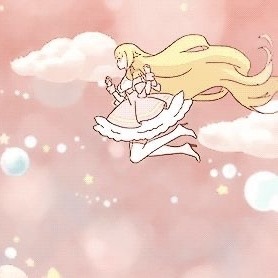
Hi! It's been a while since I last posted! I have fallen sick and it was hard for me to be active. Yet here I am with a new post! I wanted to come back with something that I haven't seen much, since Union is not a very famous asteroid tbh. This persona chart is supposed to say how you'll meet your FS and the circumstances of your meeting. Thought I think Union could also represent the moment you'll be in union with your FS, so let's do some theories and observations today!
All pictures were found on Pinterest
Other posts you could like:
જ⁀➴ Astro Observations VII
જ⁀➴ How to know when you will marry
જ⁀➴ How to know where your Future Spouse was born

JULY BOOKING OPEN
email adress: [email protected]
Soft To You presentation and Q&A ᡣ𐭩 rules ᡣ𐭩 private readings reviews
astrology menu ᡣ𐭩 tarot menu ᡣ𐭩 special astrology & tarot readings



ᥫ᭡. Union PC can be about your meeting with your FS but it can also be about the union between you two, meaning when you get together.
ᥫ᭡. Sun 4H can mean you'll meet in your country or the place you live (even if it is not your home place).
ᥫ᭡. Uranus 9H can mean you can meet because of a sudden trip, or in college, in foreign lands, and it can feel really sudden meeting.
ᥫ᭡. Uranus 9H can mean your meeting with this person can shake your beliefs to the core.
ᥫ᭡. Union PC Rising being the same as one of your SRC rising can mean this can be the year you'll meet your FS.
ᥫ᭡. Jupiter 11H means the best part of your meeting can be about becoming friends. You could feel like you met a true friend.
ᥫ᭡. Saturn 12H can mean an obstacle through your meeting can be about spiritual growth, but also sickness, or just distance.
ᥫ᭡. Moon 3H means you can think a lot of about each other after the meeting.
ᥫ᭡. Stellium 3H can mean meeting online, or social medias/ friends/ texting can play a big role in your meeting.
ᥫ᭡. Venus 3H means there can be a lot of rizz during your meeting, or a lot of flirt, a lot of sweet talks.
ᥫ᭡. Neptune 8H means you can be obsessed about each other after meeting each other! You can totally not stop to think about each other.
ᥫ᭡. Sun 3H/ 11H means meeting online or because of friends.
ᥫ᭡. Sun 4H means also meeting because of family.



ᥫ᭡. Sun conjunct Mercury means you'll talk a lot when you meet.
ᥫ᭡. Sun can be about your first meeting while Union can be about how you get together.
For example, my Best Friend has Sun 3H and she met her FS online, and her Union is in her 4H, and he will come to see her where she lives and it is a way for them to conclude this is something serious.
ᥫ᭡. Sun 2H can mean meeting while working, while making money, or your everyday life.
My Best Friend' FS is a banker and met my Best Friend while working. And he has this placement!
ᥫ᭡. Saturn 9H means there are a lot of distance between you two when you meet.
ᥫ᭡. Sun 6H means meeting them at work, while working, during your routine, while exercising, etc.
ᥫ᭡. Stellium 6H means your work will be very important during your meeting.
ᥫ᭡. 10H ruler in 7H can mean you can meet at work and you can be attached because of a contract. So you could meet because of a contract that is the reason of your meeting. Your FS can also do the same job as you.
ᥫ᭡. Neptune 12H can mean you could dream a lot about each other before meeting, or there is a huge spiritual meeting before physical meeting.
ᥫ᭡. Pluto 10H means your career and reputation will change drastically after meeting your FS, or after being in a relationship with them.
ᥫ᭡. Jupiter conjunct Union 7H can mean your FS can propose directly instead of asking you out.
ᥫ᭡. Venus conjunct Saturn means you could put barriers between you and your FS.
ᥫ᭡. Stellium in 5H can mean meeting in a party or when having fun.
ᥫ᭡. I have noticed when your Sun is in 7H, or when you have a stellium in 7H, that can mean your FS is in a relationship when you two meet.

Thank you for reading!
back to index ; ask ; request ; rules
#astrology#astro#astro love#astro tumblr#astro community#astro notes#astrology chart#astro observations#astrology observations#union#persona chart#union pc#union persona chart#astrology union#astro union#astrology union pc#astrology union persona chart#astrology pc
571 notes
·
View notes
Text
Union persona chart observations

° ゚ ꒰ঌ ✦໒꒱ ༘. ゚ ꒰ঌ ✦໒꒱ ༘. ゚ ꒰ঌ ✦໒꒱ ༘. ° ꒰ঌ ✦໒꒱ ༘°
╭──────────.★..─╮
Union asteriod (1585)
╰─..★.──────────╯
Signifies circumstances in which you'll meet your future spouse. It also tells you events or changes that will happen within your life when meeting them.
All observations only apply to union person charts. How to calculate?
acronyms used: FS (future spouse), FTF (face to face ), w (with), ° (degrees)
Stellium in 1st house/ aries
• love at first sight
• meeting at sports events
• meeting during a competition
• business events
• meeting while putting yourself out there
• social events
Stellium in 3rd & 11th house/ aquarius & gemini
• meeting online/through friends
• meeting through social media
• texting/communicating a lot
• meeting through social circles
• your friend could share their video/profile to you
Union (1° aries) in 4th house
• they'll come to your house
• they'll come to you if you live in different countries to meet ftf for the 1st time
Saturn (16° cancer) in aries 5th house
• can't go on dates/out together often
• difficult to spend time together (busy w work)
• spend time at home together
Pluto in 1st house
• they will reshape your identity
• transformating the way you express yourself
• when they come in your life, they're bringing a whole lot of upgrades to your self esteem
Union (14° taurus) in scorpio 12th thouse
• meeting ftf in a foreign land
• might be long distance for a while
• meeting at their place 👀
• meeting at a restaurant or somewhere fancy
Sun (26° Taurus) in Libra 11th house
• meeting online/through friends
• meeting because of friends
• sitting in bed scrolling through tiktok lol
Venus in aries/1°, 13°, 25° 1st house
• they'll bring luxury, romance and beauty into your life
• love at first sight!
• they might make the first move on you
Pluto (Capricorn/10°, 22°)
• they'll bring a lot of new changes into your identity i.e improve status, financial stability
• brings more passion and luxury
Eros (pisces/12°, 24°) in 1st house
• intoxicating romantic/dreamy lust surrounds your connection
Uranus (7° libra) in pisces 4th house
• might change your living situation
• long-distance/they live far from you
• change within living status
• meet online suddenly while at home/out w friends
• sudden meeting, you won't expect it at all
Saturn in 9th house
• long-distance for sure
Neptune in aquarius 3rd house
speaking honestly from the heart
talking through the phone
online conversations
dreamy conversations
maybe putting up a front at first
Instantly clicking with eachother
Feels like talking to someone you knew for years
Chiron in Capricorn 2nd house
might have issues financially ( doesn't necessarily mean you'll go broke being w this person. If you are long-distance for example, it might be hard to buy plane tickets or other means of transportation often because of how expensive it is/can get )
financial situation may be changing because of eachother
Moon in 10th/6th house
• might have met them when you have a lot on your plate
• wanting to involve them in your work/career
• wanting to show them off to other people
• might want to work together
• they'll comfort you from your work/routine
Psyche (16) in 12th house
• you might have dreamt of this person before
• feeling déjà vu when you meet them
• feeling connected to them spiritually
North node in 5th house
• meeting when you're having the time of your life
• meant to have a lot of fun with this person
• meeting at a party
• gaining a burst of creativity
• you might collaborate with this person in an artistic pursuit i.e music, theatre
• feeling like a child again
Extra notes ♡
I found that similarites between your Solar return chart and Union persona chart can indicate the chances of meeting your FS!
ex: My aunt had venus & pluto in the 1st house in her SRC, she also have these planets in the 1st house in her union persona chart. She met her husband that year!
*** entertainment only, reader discretion is advised***
° ゚ ꒰ঌ ✦໒꒱ ༘. ゚ ꒰ঌ ✦໒꒱ ༘. ゚ ꒰ঌ ✦໒꒱ ༘. ° ꒰ঌ ✦໒꒱ ༘°
Thank you for reading !
@northopalshore


#Union persona chart#persona chart#astrology community#astrology observations#astrology content#astrology blog#astrology#Union chart observations#Northopalshore#future spouse#astrology ramblings#astrology notes#astro observations
418 notes
·
View notes
Text
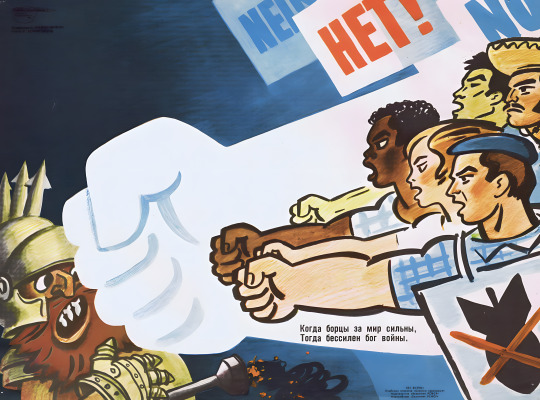
"When the fighters for peace are strong, then the god of war is powerless." Soviet Union 1987
#propaganda#poster#vintage#imperialism#capitalism#communism#socialism#ussr#soviet union#liberation#revolution#cccp#soviet#russian#cyrillic#internationalism#anti war#war
468 notes
·
View notes
Text
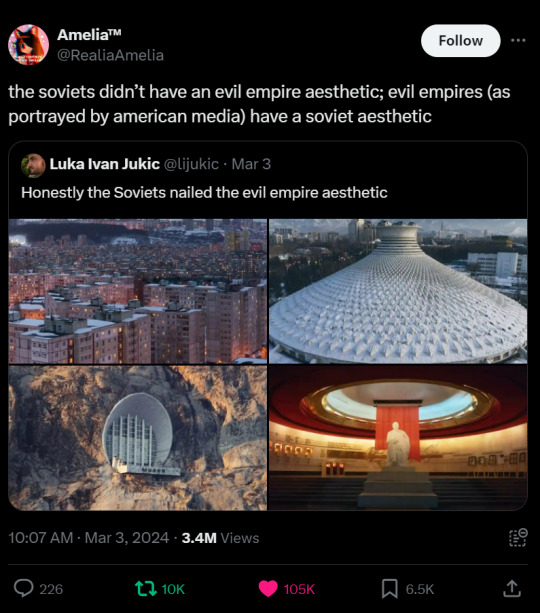
this is the level of information literacy i wanna achieve
#politics#architecture#soviet architecture#soviet aesthetic#anti communism#propaganda#information literacy#left wing politics#twitter#anti capitalism#soviet art#soviet union#soviet
957 notes
·
View notes
Text
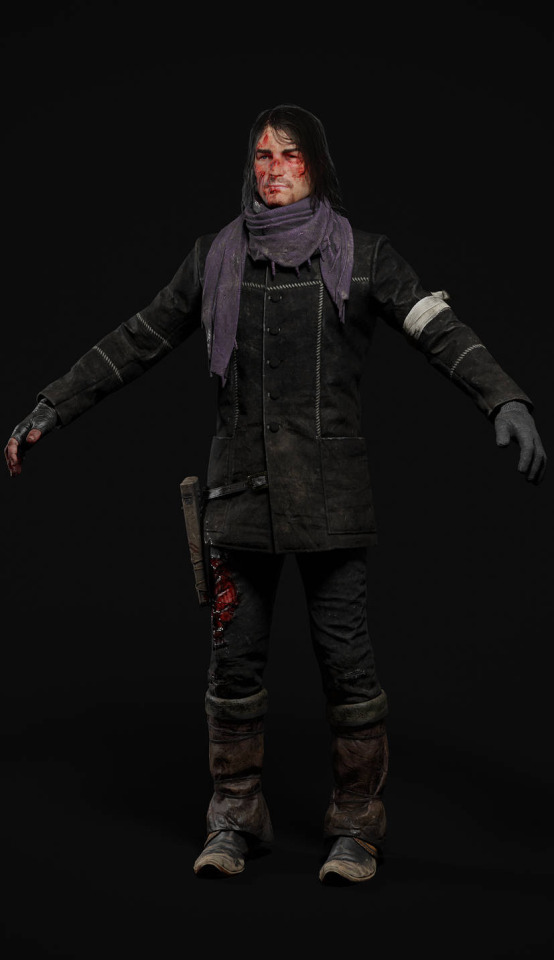
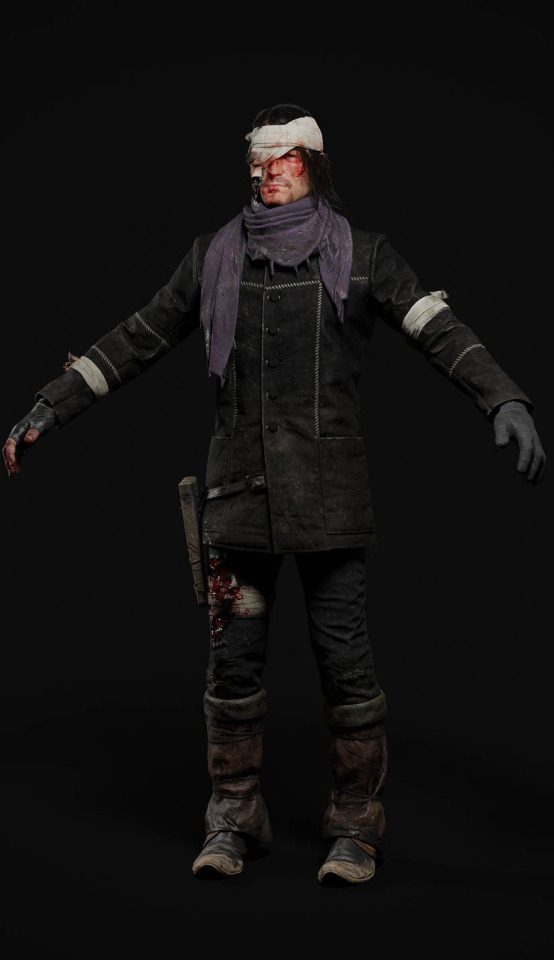
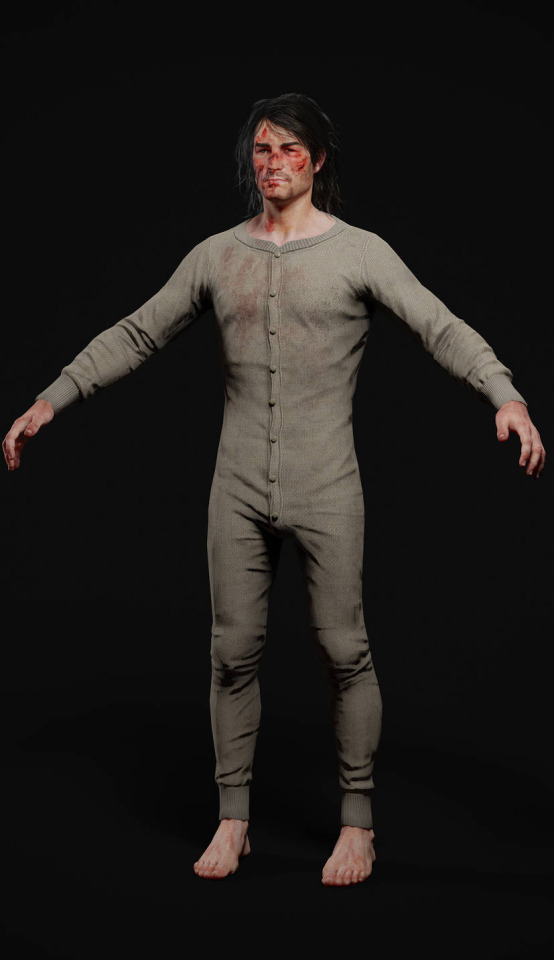


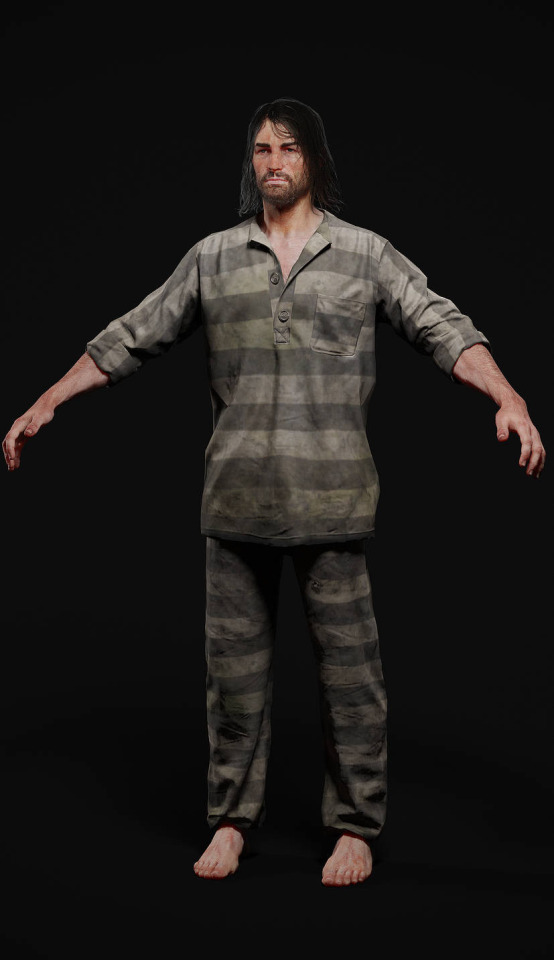
John Marston Character Models
#a feast#so so interesting#obsessed with that union suit one omfg with the hair!!#john marston#rdr2#rdr#rdr2 fandom#red dead fandom#red dead redemption fandom#red dead redemption community#red dead redemption two#red dead redemption#red dead redemption 2
409 notes
·
View notes
Text

#socialism#communism#capitalism#free market#freedom#soviet union#economy#history#data#statistics#politics
245 notes
·
View notes